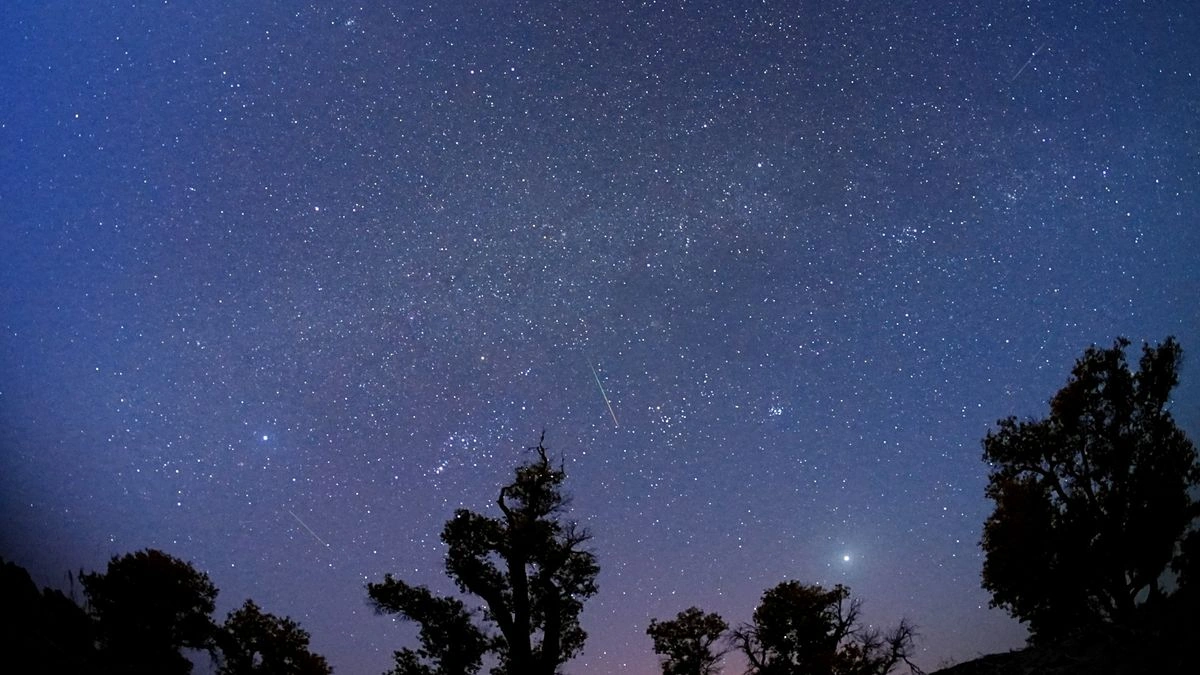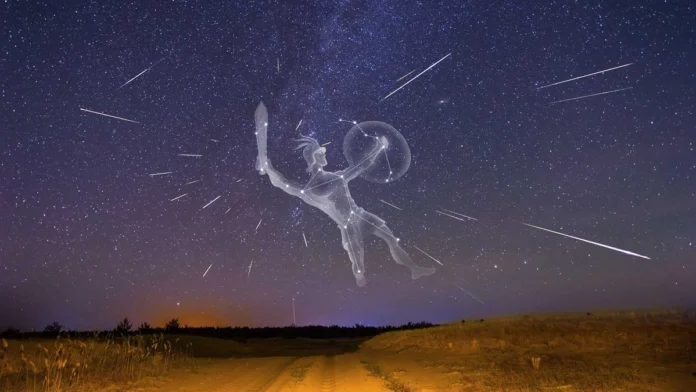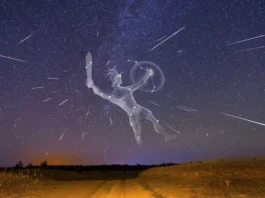Okay, stargazers, mark your calendars! The Orionid Meteor Shower is gearing up to grace the Indian skies in October 2025, and trust me, you don’t want to miss this celestial show. But here’s the thing – it’s not just about knowing when it’s happening; it’s about how to make the most of it. Forget those blurry, distant photos you see online. I’m talking about experiencing the real magic, the thrill of spotting your first shooting star streaking across the inky canvas. So, grab your chai, find a dark spot, and let’s dive into everything you need to know to witness the Orionids like a pro.
Why This Meteor Shower Matters

So, why should you care about a bunch of space dust burning up in our atmosphere? Well, for starters, the Orionids are remnants of the famous Halley’s Comet . That’s right, you’re watching debris from a cosmic celebrity! But beyond the cool factor, meteor showers offer a unique connection to the universe. It’s a reminder that we’re all part of something much bigger, constantly bombarded by tiny pieces of space history. Plus, let’s be honest, who doesn’t love making a wish on a shooting star? I know I do!
And here’s a little secret – the peak activity isn’t always the best time. Some years, the days leading up to the peak offer clearer skies and fewer light obstructions. According to historical data from the International Meteor Organization, keep an eye on the nights around October 20-23. But always check local weather forecasts!
The Ultimate India Viewing Guide
Alright, let’s get down to brass tacks. How do you actually see this thing in India? Here’s the ‘how’ angle – a step-by-step guide to maximize your chances:
- Find a Dark Spot: This is crucial. Light pollution is the enemy. Get as far away from city lights as possible. Rural areas, open fields, or even a rooftop in a less populated area will work. The darker, the better.
- Check the Moon Phase: A bright moon can wash out fainter meteors. Ideally, you want a new moon or a crescent moon during the peak. Check an online lunar calendar. A full moon during the peak of the annual meteor shower? Ouch!
- Dress Comfortably: October nights can get chilly. Wear warm layers, bring a blanket, and maybe even a thermos of hot chocolate. Trust me, you’ll thank me later.
- Give Your Eyes Time to Adjust: This is key. It takes about 20-30 minutes for your eyes to fully adapt to the darkness. Resist the urge to look at your phone (seriously, put it away!).
- Look Towards the East: The Orionids radiate from the constellation Orion (hence the name). Find Orion in the eastern sky. It’s best to view after midnight when Orion is higher in the sky.
- Be Patient: Meteor showers are unpredictable. You might see a flurry of meteors, followed by a lull. Don’t give up after 10 minutes. Stick it out for at least an hour.
A common mistake I see people make is thinking they need a telescope. Nope! Telescopes actually reduce your field of view. The naked eye observation is perfect for meteor showers. Binoculars are also not necessary. The goal is to scan as much of the sky as possible, catching those fleeting streaks of light.
What About Light Pollution?
Okay, let’s be honest. Light pollution is a major problem in many parts of India. But don’t despair! Even in areas with moderate light pollution, you can still see the brighter meteors. The key is to find a spot where you can block out direct light sources. A hill or a building can act as a shield. And remember, the darker your surroundings, the more meteors you’ll see. Consider using a light pollution map to find darker areas near you. These maps are readily available online; search for “light pollution map India”. They can be a lifesaver!
According to [ ustrendsnow.com ], minimizing screen time before heading out is crucial. The blue light emitted from screens interferes with your eyes’ ability to adapt to darkness. So, power down those devices an hour before you plan to start viewing.
Beyond the Peak | Extended Viewing Opportunities
Here’s a little insider tip: meteor showers aren’t always about the single peak night. The Orionids, in particular, often show good activity for several nights before and after the predicted peak. This means you have a wider window of opportunity to catch some shooting stars, especially if weather conditions aren’t ideal on the peak night itself. Consider monitoring space weather forecasts from reputable sources like SpaceWeather.com. These forecasts can give you insights into potential solar activity that might enhance the meteor shower display.
The Emotional Connection | A Moment of Awe
That moment of utter awe when you spot a bright meteor blazing across the sky…it’s something special. We’ve all been there; craning our necks into the dark, hoping to catch a glimpse. It’s more than just science; it’s a shared human experience, a connection to the cosmos that transcends borders and beliefs. And the best part? It’s free! No fancy equipment needed, just a clear night, a bit of patience, and a sense of wonder.
FAQ | Your Orionid Meteor Shower Questions Answered
Frequently Asked Questions
What if it’s cloudy on the peak night?
Don’t worry! As I mentioned, the Orionids are active for several nights. Check the forecast and try again the night before or after.
What’s the best time to view the meteor shower?
After midnight, when the constellation Orion is higher in the sky.
Do I need any special equipment?
Nope! Just your eyes and a dark spot.
How many meteors can I expect to see?
Under ideal conditions, you might see up to 20 meteors per hour. But remember, it varies!
Where can I find the latest updates on the meteor shower?
Check reputable astronomy websites and social media pages for updates.
As per the guidelines mentioned in the information bulletin of Time and Date , It’s best to keep checking trusted resources for the most accurate forecasts.
So, there you have it. Everything you need to know to witness the Orionid Meteor Shower 2025 in India. Remember, it’s not just about seeing the meteors; it’s about the experience, the connection, and the wonder. Clear skies and happy stargazing! This celestial event will surely leave you amazed.
P.S. Don’t forget to make a wish!




